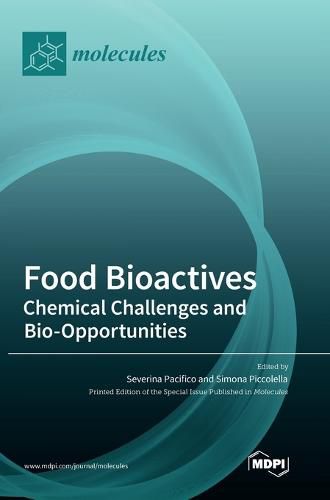Readings Newsletter
Become a Readings Member to make your shopping experience even easier.
Sign in or sign up for free!
You’re not far away from qualifying for FREE standard shipping within Australia
You’ve qualified for FREE standard shipping within Australia
The cart is loading…






This title is printed to order. This book may have been self-published. If so, we cannot guarantee the quality of the content. In the main most books will have gone through the editing process however some may not. We therefore suggest that you be aware of this before ordering this book. If in doubt check either the author or publisher’s details as we are unable to accept any returns unless they are faulty. Please contact us if you have any questions.
A full awareness of the role played by a healthy diet, as part of a healthy lifestyle, in countering or slowing-down chronic and degenerative diseases has strongly increased the interest in food bioactives and the return of ancient foods that are nowadays considered functional. In fact, these dietary substances, to which nutraceutical attributes are increasingly entrusted, could display disease-preventing effects on animals and humans. In this context, polyphenols, which are widespread and mostly copious in dietary plant sources, have gained a lot of attention thanks to their potential ability to halt or reverse oxidative stress-related diseases. Indeed, food could contain, beyond health-promoting compounds, toxicants which are naturally occurring or process-induced dietary compounds with adverse effects on human health. The presence and abundance of bioactives are strictly related to their food source. Edible plant components largely contain beneficial secondary metabolites, but understanding them fully is still an important challenge as complex biotic and abiotic interactions are involved in their biosynthesis. Analytical methods, which are increasingly powerful, could enhance our knowledge of food bioactives, whereas the deep investigation of their bioactivity and bioavailability could make them particularly useful.
$9.00 standard shipping within Australia
FREE standard shipping within Australia for orders over $100.00
Express & International shipping calculated at checkout
This title is printed to order. This book may have been self-published. If so, we cannot guarantee the quality of the content. In the main most books will have gone through the editing process however some may not. We therefore suggest that you be aware of this before ordering this book. If in doubt check either the author or publisher’s details as we are unable to accept any returns unless they are faulty. Please contact us if you have any questions.
A full awareness of the role played by a healthy diet, as part of a healthy lifestyle, in countering or slowing-down chronic and degenerative diseases has strongly increased the interest in food bioactives and the return of ancient foods that are nowadays considered functional. In fact, these dietary substances, to which nutraceutical attributes are increasingly entrusted, could display disease-preventing effects on animals and humans. In this context, polyphenols, which are widespread and mostly copious in dietary plant sources, have gained a lot of attention thanks to their potential ability to halt or reverse oxidative stress-related diseases. Indeed, food could contain, beyond health-promoting compounds, toxicants which are naturally occurring or process-induced dietary compounds with adverse effects on human health. The presence and abundance of bioactives are strictly related to their food source. Edible plant components largely contain beneficial secondary metabolites, but understanding them fully is still an important challenge as complex biotic and abiotic interactions are involved in their biosynthesis. Analytical methods, which are increasingly powerful, could enhance our knowledge of food bioactives, whereas the deep investigation of their bioactivity and bioavailability could make them particularly useful.